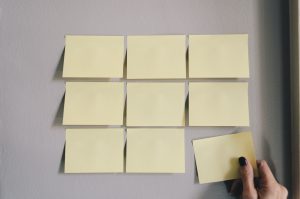
May 22, 2020, by Rupert Knight
Staying centred: what are a teacher’s core practices?
In this post, Rupert Knight considers the idea of core practices for teachers and how they might help us understand the essence of a teacher’s role, particularly at a time of extraordinary change.
What do we mean by a ‘core’ for teachers?
Closely following the Early Career Framework for teachers and using much of the same structure and terminology, the DfE recently introduced the ITT Core Content Framework. This document specifies a universal minimum entitlement for student teachers during the teacher education process and has not been without its critics, particularly for its stance on learning, as summarised in this BERA blog. For each of the Teachers’ Standards, the framework promises ‘a core body of knowledge, skills and behaviours’, presented as ‘learn that’ and ‘learn how to’ statements, implying a separation between knowledge on the one hand and skills and behaviours on the other.
This word ‘core’ has cropped up elsewhere as part of attempts to define experiences for beginning teachers – and in a way that potentially integrates knowledge, skills and behaviours. A wide-ranging group of US researchers has, for over a decade, been considering the idea of a set of core practices for teaching in an attempt to put practice and pupil learning at the heart of teacher education. In this paper by Morva McDonald and colleagues, these practices are defined, for example, as high frequency aspects of teaching that are:
– grounded in research
– allow an insight into pupil learning
– involve the exercise of professional judgment.
Aren’t core practices just ‘what teachers do’?
Core practices therefore differ somewhat from popular, superficially similar, attempts to articulate productive teacher activities. For example, Doug Lemov’s Teach Like a Champion materials attempt to analyse the classroom practices of ‘effective’ teachers, distilling them into a set of scripted, choreographed techniques. Core practices, however, have much more to do with judgment and thoughtful contingency on pupils’ actions. They tend not to be reduced to the fine-grained level of predictable teacher behaviours, but instead account for complex, dynamic episodes in teaching. To take another example, there has been a resurgence of interest in Barak Rosenshine’s Principles of Instruction. While these principles are broader and have a basis in research, Rosenshine’s stated ambition as an ‘instructor’ is to optimise the pupil’s ability to learn and recall knowledge. This aim is an important one, of course, but does not account for the whole of learning and teaching. Core practices, in contrast, are not presented as a list to work through and are not predicated on a particular form of pedagogy.
The identification of core practices potentially offers a richer way of organising and thinking about high-impact teaching activities, while acknowledging and preserving the complexity of teaching. They are, according to the Core Practices Consortium, ‘strategies, routines and moves that can be unpacked and learned by teachers’. The word ‘unpacked’ seems significant here, suggesting the need for teachers to have an understanding of, and rationale for, their practice, as well as potentially developing a valuable common language.

So what might count as a core practice?
Core practices researchers are clear both that their aim is not to specify a single set of universal practices and that some may be subject-specific. Nevertheless, some suggestions are offered below and, in each case, just a few of the many decisions and judgments that might be considered when unpacking each practice. At a time when online, socially-distanced and perhaps mixed age-group learning has become the norm, to what extent and how might these practices be enacted beyond the traditional classroom setting?
Eliciting pupils’ prior knowledge before working on new learning:
– Timing: to inform planning in advance or to move on the lesson as it progresses
– Teacher’s stimulus: use of carefully chosen questions, scenarios, tasks, etc.
– Mode of pupils’ responses: spoken, written, drawn, demonstrated etc.
– Ownership: exclusively teacher-led or promoting pupils’ awareness of and interest in their own learning
(e.g. see examples in this brief article in a science context)
Explaining a new concept:
– Sequencing of concepts: starting with big picture or building up from the bottom
– Introduction of new terminology: how this might be presented and reinforced
– Selection of concrete or visual resources: what might be clear, engaging and meaningful
– Choice of examples / non-examples: making the teaching points explicitly with minimal distraction
(e.g. see Tom Sherrington’s blog on explanations for some practical examples)
Modelling a task:
– Choice of examples: examples which exemplify ‘correct’ procedures or draw out misconceptions
– Use of thinking aloud: which decisions and steps / missteps to articulate in order to make the thought process clear
– Resemblance to the actual task to be undertaken by pupils: devising a clear analogue for what the pupils will encounter
– Process of transfer of responsibility from teacher to learner: when and how ‘my turn’ becomes ‘our turn and ‘your turn’
(e.g. see this previous blog in our series on modelling)
Using questioning to promote higher-order thinking or inquiry:
– Balance between pupil freedom and teacher direction: maintaining a clear sense of purpose while responding authentically to emerging ideas
– Choice of initial questions or stimuli: selecting something thought-provoking, engaging and sufficiently ambiguous
– Use of the ‘feedback’ move to keep the dialogue open: avoiding closing down the thought and helping pupils to build on one another’s ideas
– Use of pupils’ own questions and lines of inquiry: helping pupils to craft and evaluate relevant questions
(e.g. see this previous blog in the series on dialogic teaching)
Checking for understanding at strategic points in the learning:
– Timing: identifying key phases in learning episodes and the pre-requisite understanding for moving on
– Diagnosis: careful selection of questions or other tasks to maximise feedback on the understanding in an unambiguous way
– Mode of pupil response: being able to tune into all learners’ understanding as efficiently as possible
– Next steps: anticipating and planning for a variety of follow-up moves dependent on responses received
(e.g. see Dylan Wiliam talking about ‘hinge point questions’ as part of this process)

How might we use core practices in a teacher’s development?
There is probably little dispute about the importance of practices like those above, but we might want to consider their status in a teacher’s journey. Some may argue for beginning teachers learning them as a set of prescriptive routines to be ‘mastered’- a fast track to minimally competent practice in the short term. I prefer to think of these frequently occurring and powerful routines not only as techniques to be observed, practised and honed, but also as objects of ongoing inquiry and conscious reflection. In each case, we might ask, for example:
– What are the constant features and what varies?
– How did judgment affect the implementation?
– How have other teachers used this practice?
– To what extent do different practices exist according to different age phases or subjects?
How might we retain and adapt these practices when teaching from a distance?
At a time of great upheaval and uncertainty in education when the usual mode of teaching has changed for the time being, perhaps holding onto a consistent group of core practices as a starting point is particularly important. Nevertheless, we must also acknowledge that normal patterns of interaction have been hugely disrupted and expectations must be realistic.
– Do these practices – albeit heavily adapted -still hold true?
– Has the current situation for schools brought new core practices to the surface?
It would be great to hear your thoughts on how these practice, or others you might argue for, might translate to the current realities of schooling.
No comments yet, fill out a comment to be the first

Leave a Reply